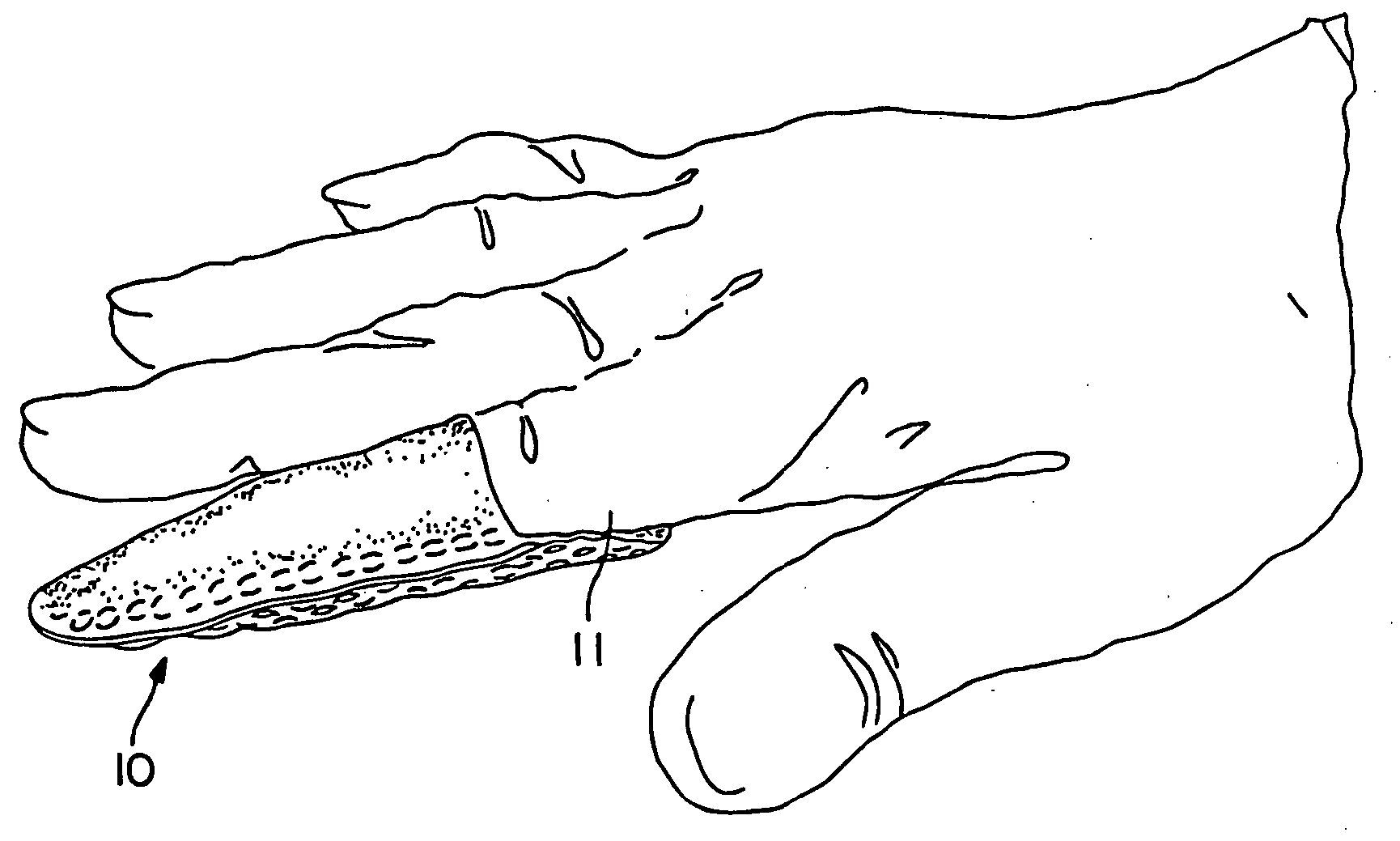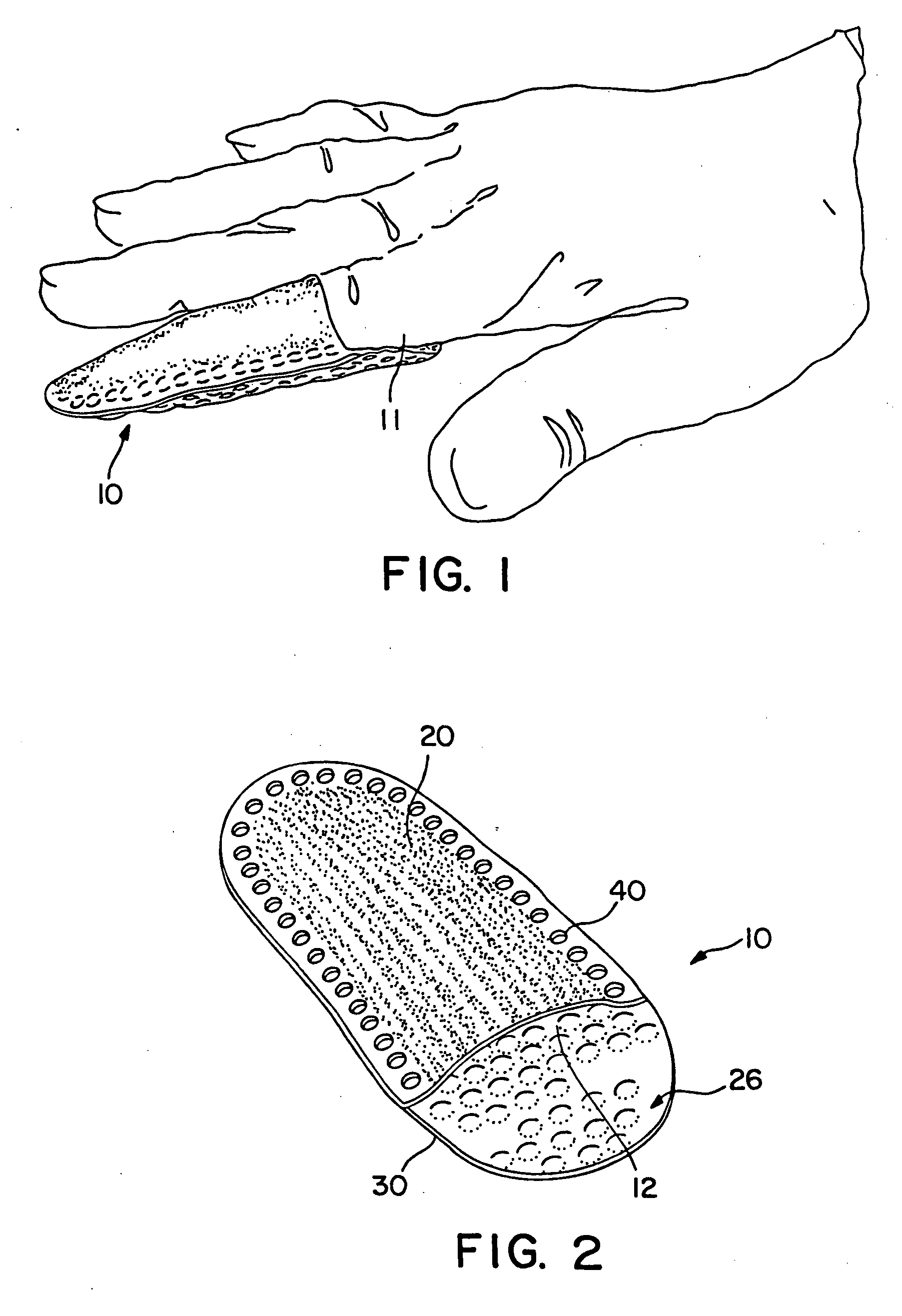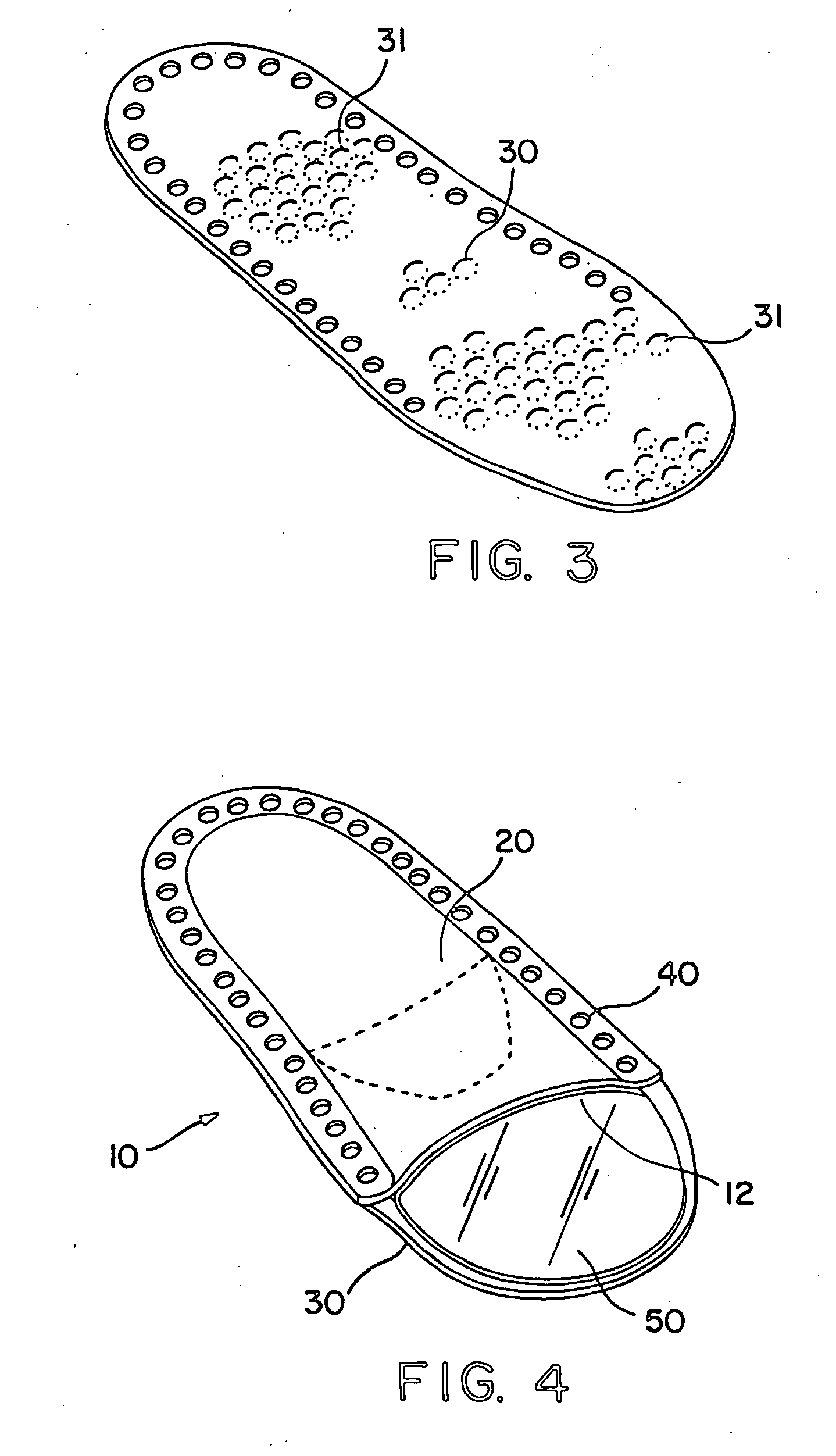Dental wipe
a technology for teeth and gums, applied in the field of dental wipes, can solve the problems of affecting oral health, many daily environments do not provide a setting which fosters or even allows, and achieve the effects of ensuring oral health, ensuring hygiene, and ensuring hygien
- Summary
- Abstract
- Description
- Claims
- Application Information
AI Technical Summary
Benefits of technology
Problems solved by technology
Method used
Image
Examples
example 1
A dental wipe of the present invention was formed as follows. Specifically, a first section made from a point of unbonded spunbond laminate materials was ultrasonically welded to a stretch-bonded laminate (SBL) sheet using a Branson 920 IW ultrasonic welder. The point unbonded spunbond laminate formed the front of the dental wipe, while the SBL sheet formed the back of the dental wipe. An example of a point unbonded laminate is described in U.S. Pat. No. 5,858,515, which is incorporated herein by reference.
The point unbbnded spunbond laminate was formed by thermally bonding together a polypropylene spunbond web, a breathable film sheet, and a bicomponent spunbond web. The breathable film sheet was placed in between the spunbond webs.
The polypropylene spunbond web had a basis weight of 0.5 osy the bicomponent spunbond web was made from a polyethylene component and a polypropylene component in a side-by-side relationship. The bicomponent spunbond web had a basis weight of 2.5 osy...
example 2
A dental wipe as described in Example 1 was constructed and treated with peppermint oil. The dental wipe was then subsequently used by an adult to clean the mouth of a toddler.
example 3
A dental wipe made according to Example 1 was constructed. The dental wipe was dipped into drippings from sliced steak and then used by an adult to clean the mouth of a dog.
PUM
| Property | Measurement | Unit |
|---|---|---|
| length | aaaaa | aaaaa |
| diameter | aaaaa | aaaaa |
| area | aaaaa | aaaaa |
Abstract
Description
Claims
Application Information
 Login to View More
Login to View More - R&D
- Intellectual Property
- Life Sciences
- Materials
- Tech Scout
- Unparalleled Data Quality
- Higher Quality Content
- 60% Fewer Hallucinations
Browse by: Latest US Patents, China's latest patents, Technical Efficacy Thesaurus, Application Domain, Technology Topic, Popular Technical Reports.
© 2025 PatSnap. All rights reserved.Legal|Privacy policy|Modern Slavery Act Transparency Statement|Sitemap|About US| Contact US: help@patsnap.com



